Beautiful fences are an added attraction of a property. Whenever we think of a well-defined fence, we can relate a few items that are capable of adding precise boundaries, but they look awesome too. Wood fencing is one of these options that has the beauty and utility at one go in its boundary defining, entry control, improving privacy, etc. If installed properly with appropriate wood, woody fencing is sturdy enough and will work as a natural, non-toxic, and sufficiently climate-proof structure around your premise, which are inexpensive and light-in-weight too
Timber has proven to be a suitable natural material for its meticulous use in a wide range of commercial and domestic fences worldwide. It is readily available in various shapes and sizes and can be easily modified into the desirable shape and size with common tools and that makes the wood easy to work with its planks and logs. Wood in its natural form (Depending upon the species) or with the seasoning treatment can last longer and perform better than many wood-alternative materials.
Fences are constructed of posts, rails, wire, and, in some cases, barrier panels, and it is used to define a land boundary or as a means of protection, confinement, privacy or visual obstruction around a residential house, yard, a farmhouse, or around a property used for commercial purposes. Fences can be used to protect or divide a property and also to improve its appearance.
Fences are available in many forms and these structures serve many purposes; examples include boundaries, windbreaks, containment of livestock, noise barriers, etc. Whatever is its purpose, the fence should be planned carefully. Also, there are many types of fences available to choose from, i.e., brick wall, stone wall with iron fence, wood fencing, precast concrete fencing, aluminum fencing, barbed wire fencing, chain link fencing, and bamboo fencing, etc.
We have already gathered few trending ideas on various types of fencing in our blog:
In this piece of content we are going to discuss about wood fencing & their parts, what type of wood you can use, and which type of pattern/design is suitable for your home! So, let’s try to understand it point wise and step-by-step.
What is a Wood Fencing?
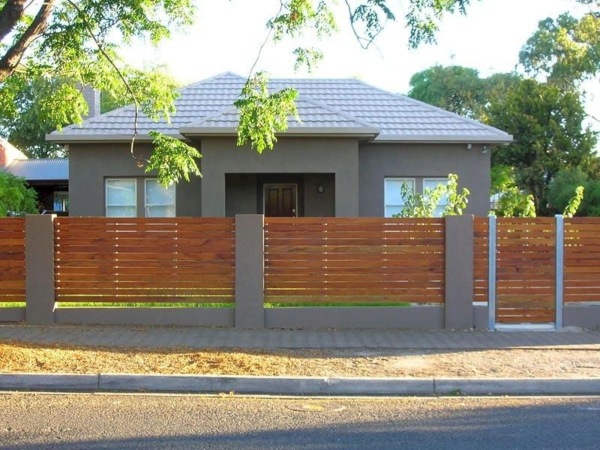
Wooden fencing may serve different roles. It can work as a partition, a structure, a wall divider, a marker, a barrier made of wood and located along the boundary around the designated yard or elsewhere within the property. It is also known as timber fencing.
Parts of Wooden Fences
Depending on the types of wood fences, it consists of the following basic parts:
01. Post:
Posts are the vertical components of wooden fence that support and hold all the other components.
02. Rail:
Rails are the horizontal components of fence that connect all the post parallel to ground.
03. Nails:
Nails are used in wood fencing to hold all the components of wood together.
04. Cap:
The protective part of the fence that safeguards the vulnerable endpoint of the wood and keep the wood weather-proof as much as possible.
05. Picket:
This fence component stands straight up on rails; often is built with a pointy tip.
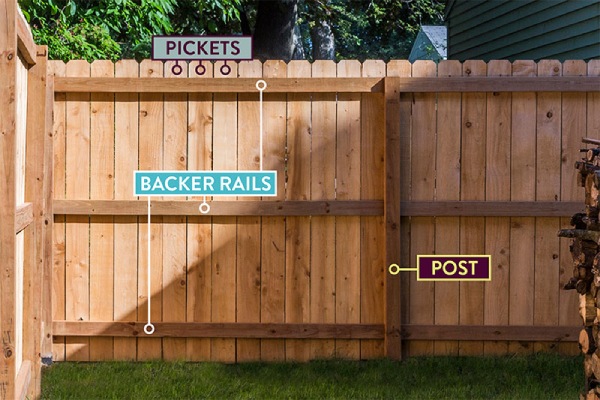
If you decide to build a wooden fence, the first question is what kind of wood do you need for a wooden fence? Some specific types of wood are commonly used for making wooden fences as they will be in direct contact with the ground and the surrounding environment, and these wood fences are expected to be enduring reasonably. Let’s see which wood type sare the best for making wood fencing.
Types of Wood Used For Fencing
According to the research paper “Characteristics and Availability of Commercially Important Woods” developed by ‘Michael C. Wiemann’ to achieve a satisfactory service life of a wooden fence, the following types of woods can be used:
01. Cedar Wood
Cedar wood is softer rather than lighter in weight and has lesser strength and limited shock resistance. It gets slightly compressed when it is set for drying. You can work on it smoothly, it holds color well, and is exceptionally resistant to heartwood decay. Due to its high durability, it is used for making poles, posts, cabin logs, railroad crusts, lumber, shingles, decorative fencing, and boats.
02. Fir Wood
Fir Wood is also known locally as red-fir wood, Douglas-spruce, and yellow-fir wood. The range of fir wood extends from the Rocky Mountains to the Pacific Coast and from Mexico to central British Columbia. Fir Wood is used mostly for building and construction purposes in the form of lumber, piles, plywood, and engineered wood composites. These woods are costly but when used in fence the durability of the wood is taken into the count. This type of wood is reliable for holding screw and they are highly split-proof.
03. Red Oak Wood
Red oak wood is dense and it shrinks during drying. The red oaks are primarily cut into lumber, railroad crossties, fence posts, veneer, etc. Generally, timber fence posts by red oak wood require preservative treatment for satisfactory service.
04. Teak Wood
Teak wood is versatile, strong, durable, weather and warp-resistant, also does not decay easily. Teakwood being strong and having a long life is also very costly. It therefore is used only for erecting posts and maybe for making rails. Apart from fencing, it can be used for cabinet making, interior and exterior joinery, flooring and fine furniture, carving, paneling, turnery, veneers, and poles. Poles made from teak wood are used for scaffolding, fence posts and telecommunications lines.
If you are planning to make a wooden fence, you should look at the advantages and disadvantages of a wooden fence beforehand.
Advantages of Wood Fencing
01. One of the significant advantages you can get from a wood fencing is that it adds aesthetic value to a premise. It can enhance the look of your home, and set it apart from the neighboring homes. Well, this can be achieved by using painting, carving or staining. You can paint your fence in regular water-resistant paint to enhance their appearance and to extend their service life.
02. Timber fencing is an eco-friendly option. Wood is a natural substance that can be taken from a tree at any time. Old wooden fence pieces can also be disposed of without damaging the surroundings. Therefore, wood fencing is always one of the safest methods to consider.
03. Most fencing options like stone or brick wall fencing, steel fencing, metal fencing are expensive, but the option to buy and install a wooden fence is mostly affordable, provided wood is available in plenty from your localities.
04. Wooden fences can be customized according to the owner’s needs keeping everything on a budget.
Disadvantages of Wood Fencing
01. Wooden fences may have a shorter lifespan than some other fencing materials like aluminum, steel, bricks, etc.
02. The wooden fences can last a long time only if maintained regularly and properly. If the wood fences is not maintained or if the area where the fence is fixed experiences a lot of rain and snow, then the wooden fence’s life will be naturally reduced.
03. The main disadvantage of using wood in fence is that it is flammable as it catches fire quickly.
04. It also gets attacked by termites and insects easily and you have to maintain it regularly to keep them protected and in good health.Let us now understand different types of wooden fences available. Let’s take a look at it.
Types of Wood Fences
When you choose the types of wood fences, the first question you need to keep in mind is -what is it for? – Why I am investing in wood fence? Is it to mark the boundary only? Is it to ensure privacy too? Is it for enclosing or defining a special area? Or am I building the fence to keep pets or children secure? Is it to enhance the appearance of my property or landscape planting? It is likely that your fence is intended for more than one of these purposes. You have to be aware of its making purpose first. Let us therefore see different types of wooden fences.
01. Wood Picket Fence

Wood picket fencing is popular for domestic settings, such as a decorative, lower level garden border. It is also widely used for sectioning and as perimeter fencing but it offers limited security in comparison to steel fence or brick wall, etc.
02. Post and Rail Fence
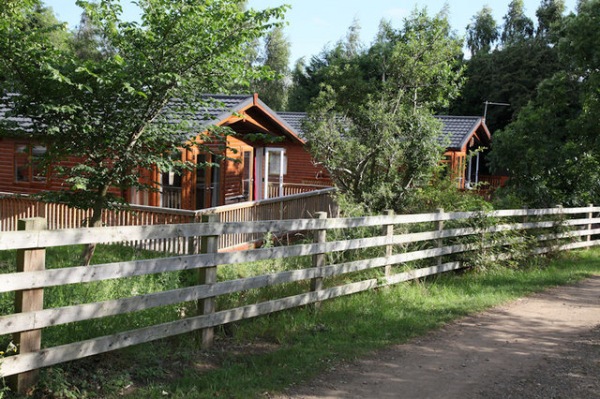
Post and rail fence is available in several different styles, and it is commonly used as perimeter or boundary fencing around the agricultural areas or for safeguarding livestock.
03. Wood Lattice Fence
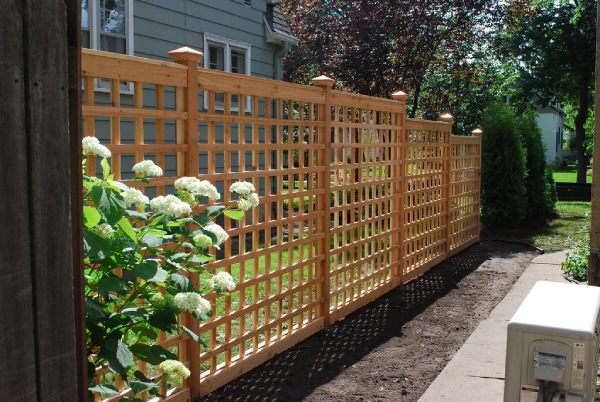
Wood lattice fences are predominantly suitable for boundary demarcation or as perimeter fences for residential properties. Lattice sections can also be used to add height to panel fences and for trailing plants.
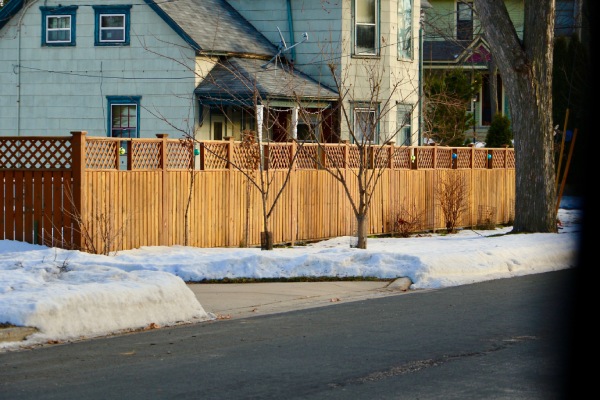
04. Wood Louver Fence

Wood louver fences as a noise barrier is a suitable option to reduce noise emanating from a particular area. Also, this type of fence provides privacy, and is therefore popular in residential areas.
05. Vertical Board Fence
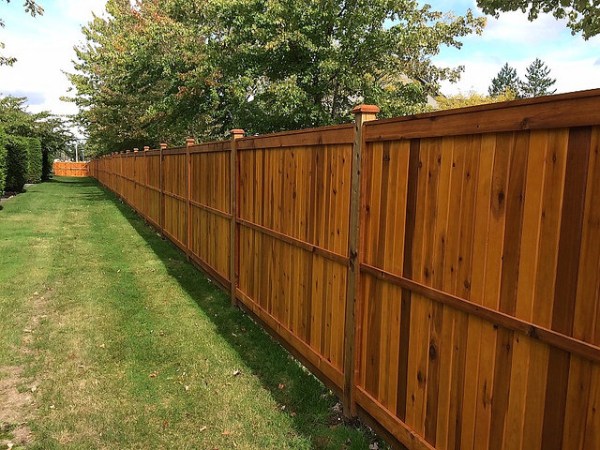
Based on the same construction principles as Wood picket fencing, vertical board fencing provides good privacy in a domestic context, and can be a significant noise barrier. It is widely used as a domestic garden fence, notably on new-built housing estates.
Summing up
People has been building wooden fences for thousands of years. Wood is accessible, easy to shape and repair, and aesthetically attractive. Besides, wooden fences can suit different styles. They are mostly safe, and with proper planning, maintenance and care, they can last a long time. Probably the best, and the most durable and the most attractive wooden fence does not require advanced carpentry skills.
Wood fencing is the most popular fencing option available where wood is available in plenty and it affordable. Besides from setting a natural mood in your garden or home, they can be used to build private setting in your farms. Not only this, but they can also be set around a patio or pool.
Before you leave this amazing informative page, refer to another article on fencing that we have already published Why Fencing Your Property is Important to Protect Your Home? Furthermore, if you want to update your knowledge, read the link, which is especially suggested for you about
Image Courtesy: Image 2
